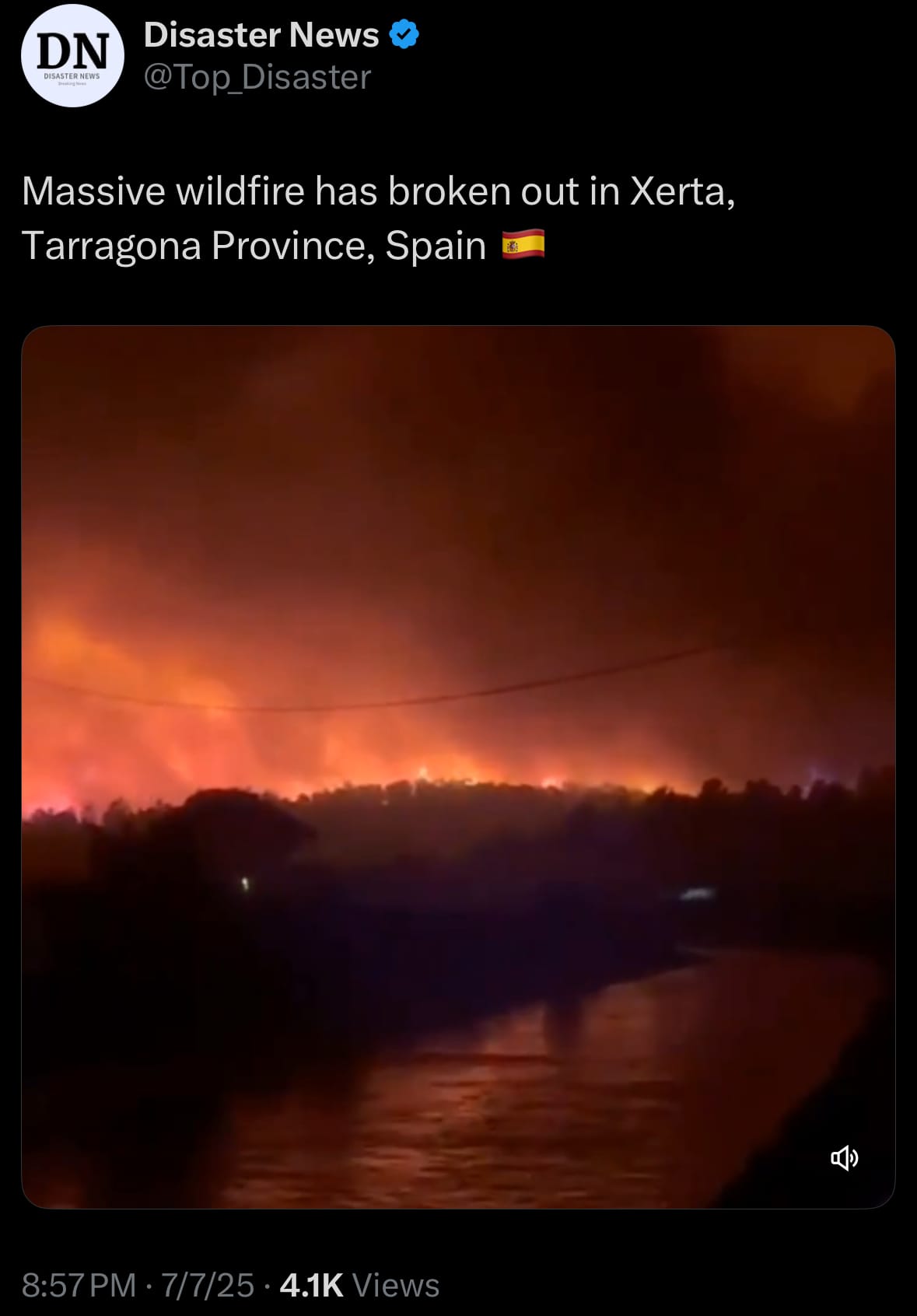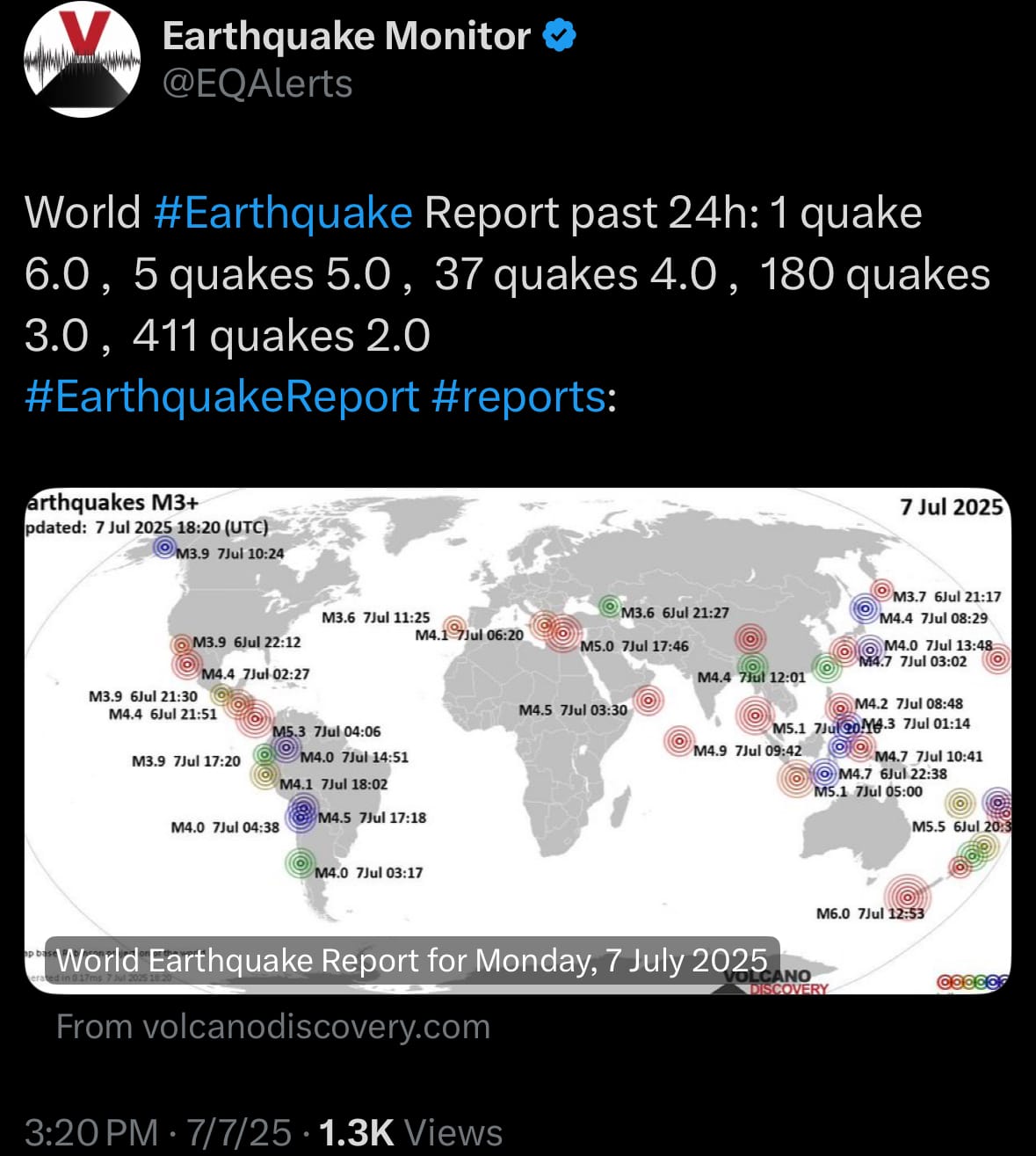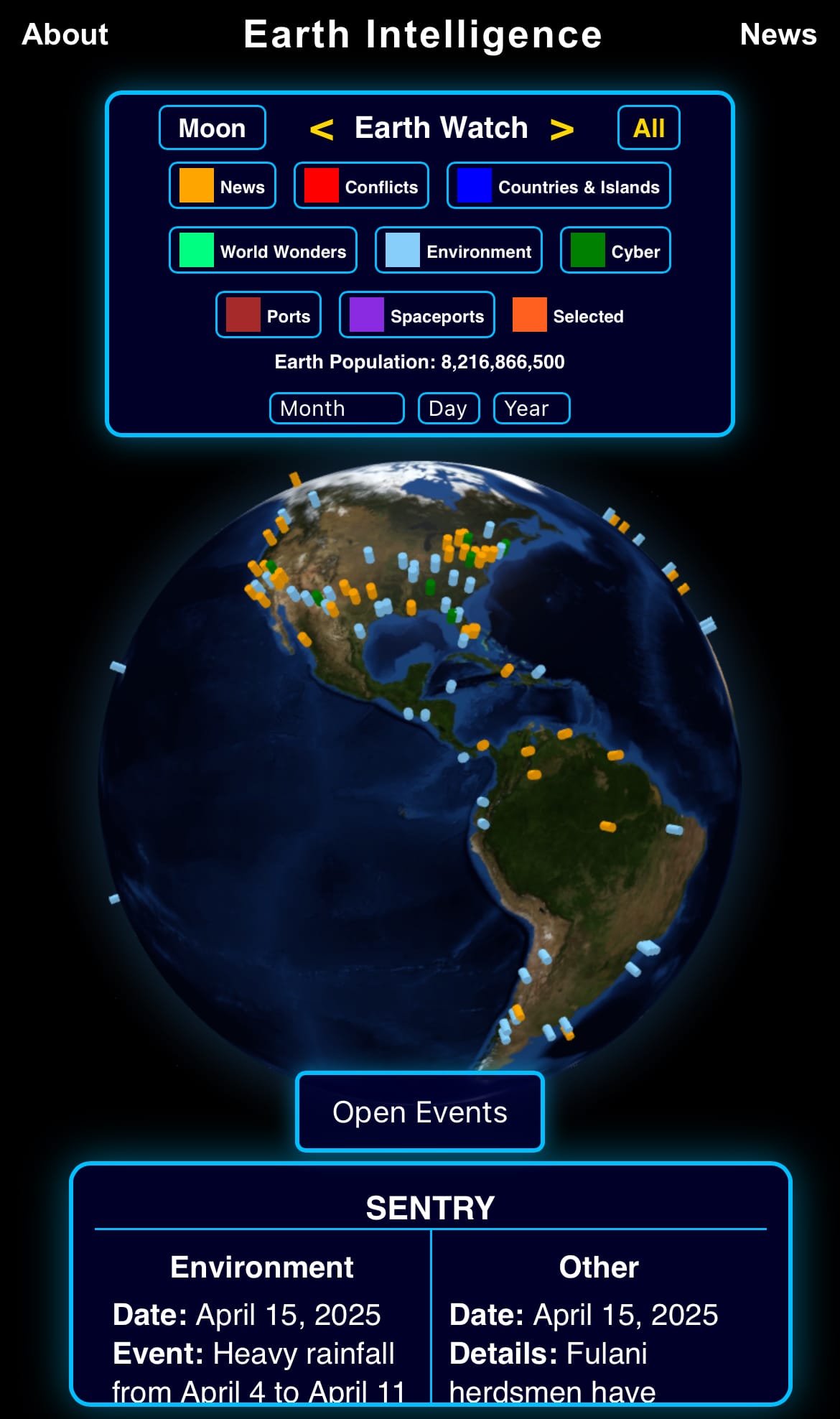Tuesday☕️

Trending:
- Yesterday, July 7, 2025, Kenya experienced widespread anti-government protests marking the 35th anniversary of the 1990 Saba Saba pro-democracy movement, leading to at least 11 deaths and over 560 arrests. The demonstrations, primarily in Nairobi and other regions, were driven by public frustration over issues like corruption, police conduct, and economic difficulties, including high inflation and unemployment. Protesters clashed with police, who used tear gas, water cannons, and, in some cases, live ammunition, prompting concerns about the response. Recent events, such as the death of a teacher in custody and the shooting of an unarmed street vendor, added to the public’s discontent. The protests disrupted major roads and businesses, reflecting deep concerns about governance and economic challenges.

- The government’s efforts to manage the protests, including blocking access to key sites like Parliament, have sparked debate, with human rights organizations calling for investigations into the use of force. These events follow earlier unrest, including 2024 protests against proposed tax increases and recent demonstrations tied to specific incidents. The Saba Saba anniversary, a symbol of Kenya’s democratic struggle, continues to inspire calls for reform. With Nairobi’s central areas affected into July 8, the situation highlights ongoing tensions and the need for dialogue to address public grievances and systemic issues like economic hardship and governance concerns.
Economics & Markets:
- Yesterday’s U.S. stock market:

- Yesterday’s commodity market:

- Yesterday’s crypto market:

Environment & Weather:
- As of today, July 8, 2025, a large wildfire is burning in southern Catalonia’s Baix Ebre region near Paüls, Spain. Starting on July 7, it has scorched about 1,600 hectares (3,950 acres) and could spread to 3,000 hectares (7,410 acres). Strong winds, rough terrain, and a heatwave are making the fire difficult to control, forcing 50 residents from towns like Xerta and Alfara de Carles to evacuate. Smoke has led to confinement orders in nearby areas. Over 280 firefighters, 90 ground units, 16 aircraft, and military teams are battling the blaze, but it may not be contained until at least midday on July 8. The fire has damaged infrastructure, closing parts of the C-12 highway and destroying a petrol station in Xerta, impacting local communities and the environment.

- Just days earlier, another wildfire in Catalonia’s Lleida province killed two people and burned 6,500 hectares (16,060 acres), underscoring the severe fire risk during Spain’s current heatwave. Hot, dry conditions across the Mediterranean are intensifying these fires, with similar issues in France and Greece. The European Union is assisting by sending firefighting planes and crews to Spain and other affected countries. As climate change drives more frequent heatwaves and droughts, wildfires are becoming increasingly common, challenging Spain’s response capabilities.

Space:
- As of July 2025, SpaceX is constructing two large-scale “Gigabay” facilities to manufacture and assemble Starship rockets, one in the newly incorporated Starbase city near Boca Chica, South Texas, and the other at its Roberts Road facility at NASA’s Kennedy Space Center in Cape Canaveral, Florida. Starbase, Texas, was officially incorporated as a Type C municipality on May 3, 2025, following a vote by residents, primarily SpaceX employees, with 212 in favor and 6 against, marking the first new city in Cameron County since 1995. The Texas Gigabay, located in Starbase, spans 700,000 square feet, with groundwork beginning on June 30, 2025, at an estimated cost of at least USD 250 million for site work, construction, and specialized equipment. It aims to be one of the world’s largest single buildings and produce up to 1,000 reusable Starships annually.
- The Florida Gigabay, covering 815,000 square feet and standing 380 feet tall, is in early site preparation as of July 7, 2025, with land clearing underway and full construction planned for April 2025, targeting completion by August 2026. It will support high-volume production and refurbishment for launches from Kennedy Space Center’s Launch Complex 39A and potentially Cape Canaveral’s Space Launch Complex 37. These facilities will establish Starbase and Roberts Road as SpaceX’s primary hubs for manufacturing, testing, and launching, streamlining supply chains to accelerate production and flight cycles.
Statistic:
- Largest public aircraft manufacturers by market capitalization:
- 🇺🇸 Boeing: $164.84B
- 🇳🇱 Airbus: $163.93B
- 🇺🇸 Lockheed Martin: $109.89B
- 🇮🇳 Hindustan Aeronautics: $38.94B
- 🇫🇷 Dassault Aviation: $27.28B
- 🇨🇳 AVIC Shenyang Aircraft Company Limited: $22.85B
- 🇺🇸 Textron: $14.84B
- 🇧🇷 Embraer: $11.24B
- 🇨🇦 Bombardier: $10.73B
- 🇺🇸 Joby Aviation: $8.97B
- 🇰🇷 Korea Aerospace Industries: $6.10B
- 🇺🇸 Archer Aviation: $5.58B
- 🇺🇸 Eve Air Mobility: $2.23B
- 🇨🇳 EHang Holdings: $1.22B
- 🇬🇧 Vertical Aerospace: $0.59B
History:
- Radar, an acronym for Radio Detection and Ranging, emerged in the early 20th century as a groundbreaking technology for detecting objects using radio waves. Its origins trace back to the 1880s when German physicist Heinrich Hertz demonstrated that radio waves could reflect off solid objects. By the early 1900s, inventors like Christian Hülsmeyer in Germany patented rudimentary systems for detecting ships, but these were limited in range and accuracy. The technology gained momentum in the 1930s when military needs, particularly in Britain and Germany, spurred rapid development. In Britain, Robert Watson-Watt and his team developed a practical radar system by 1935, leading to the Chain Home network, a series of radar stations crucial for detecting incoming aircraft during World War II. Concurrently, Germany, the United States, and other nations advanced their own radar systems, with innovations like the magnetron—a high-powered vacuum tube—greatly enhancing radar’s range and precision by 1940.
- During World War II, radar became a decisive tool, enabling early warning of air and sea attacks, guiding night fighters, and aiding navigation in poor visibility. The Battle of Britain (1940) showcased radar’s strategic importance, as the Chain Home system allowed the Royal Air Force to efficiently deploy fighters against Luftwaffe raids. Post-war, radar technology diversified beyond military applications. By the 1950s, it was integral to civilian aviation for air traffic control and weather monitoring, with Doppler radar emerging in the 1960s to track storm movements. Advancements in microelectronics and computing in the late 20th century led to more compact, precise systems, enabling applications like automotive radar for collision avoidance and space exploration. Today, radar remains a cornerstone of navigation, defense, and scientific research, evolving with innovations like synthetic aperture radar for high-resolution imaging and quantum radar for enhanced detection capabilities.
Image of the day:

Thanks for reading!
Earth is complicated, we make it simple.
Click image to view the Earth Intelligence System:



Support/Suggestions Email:
earthintelligence@earthintel.news




